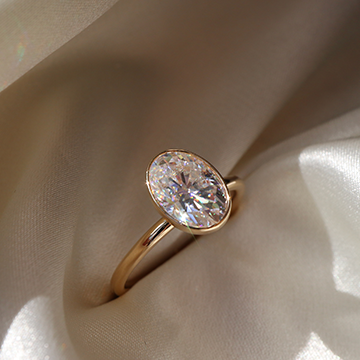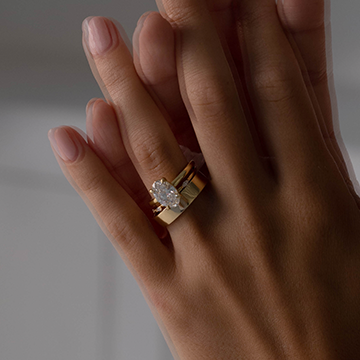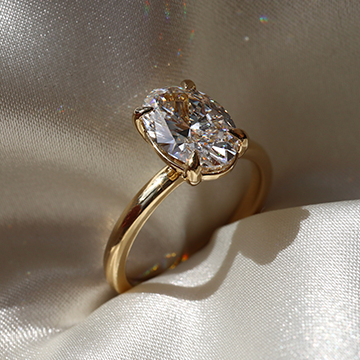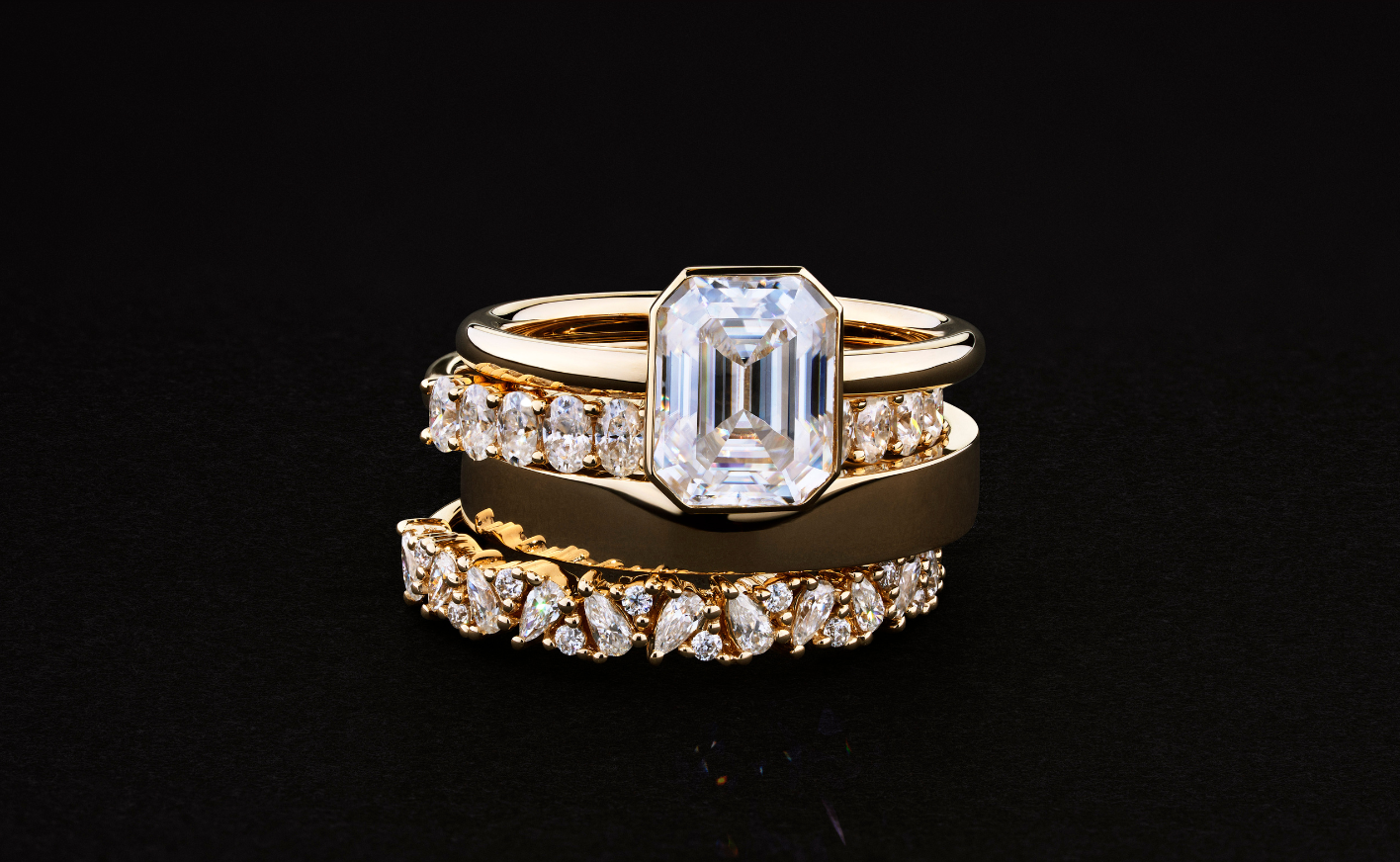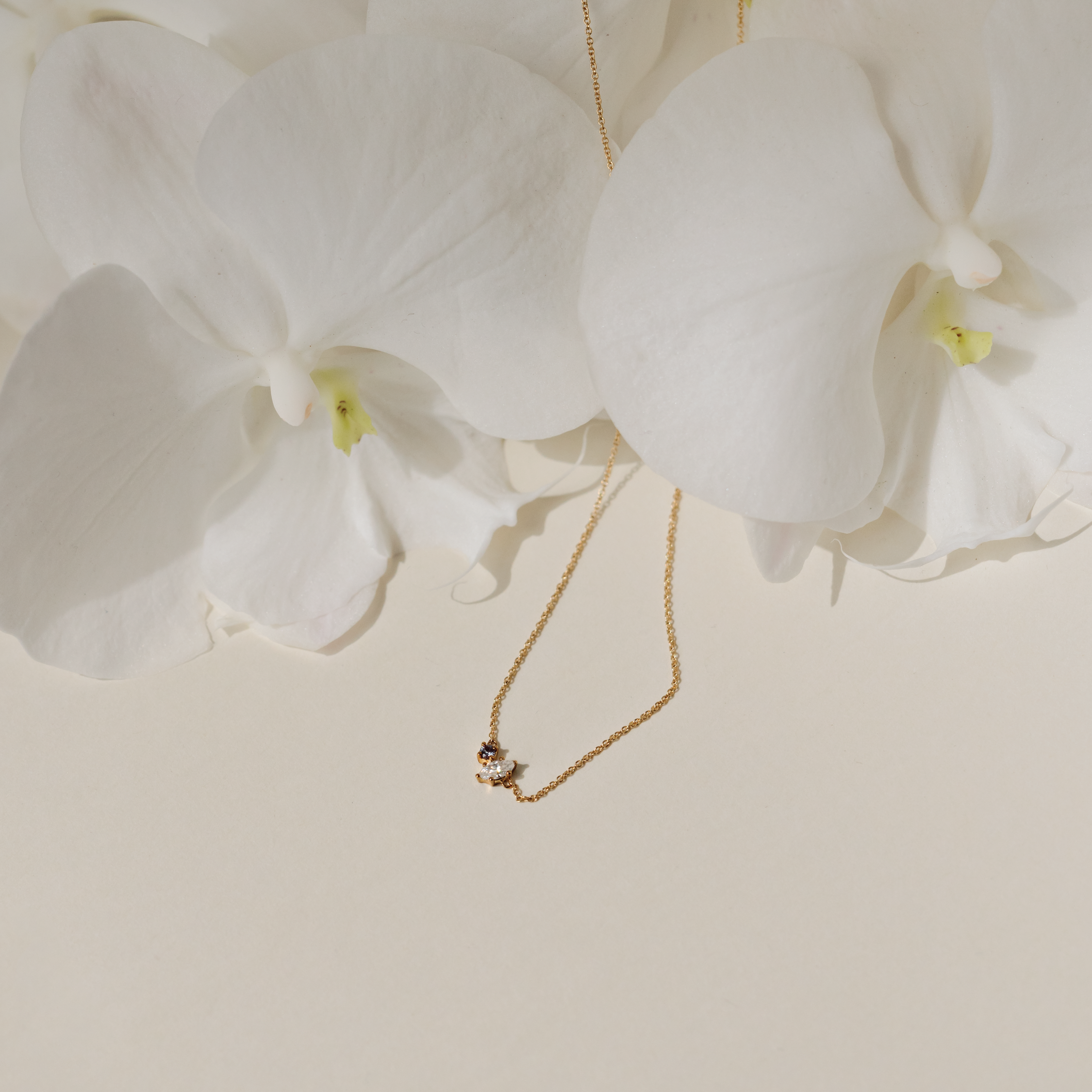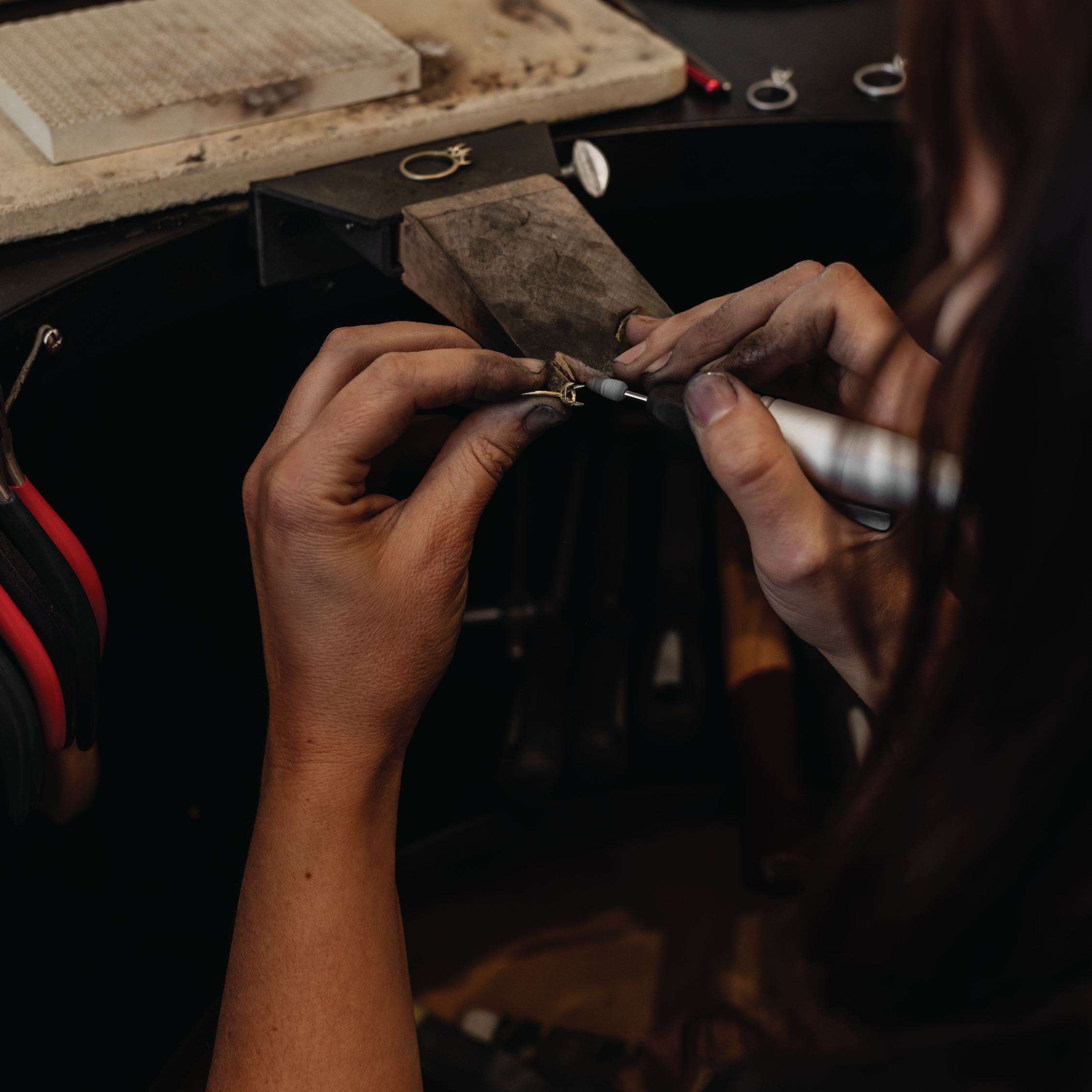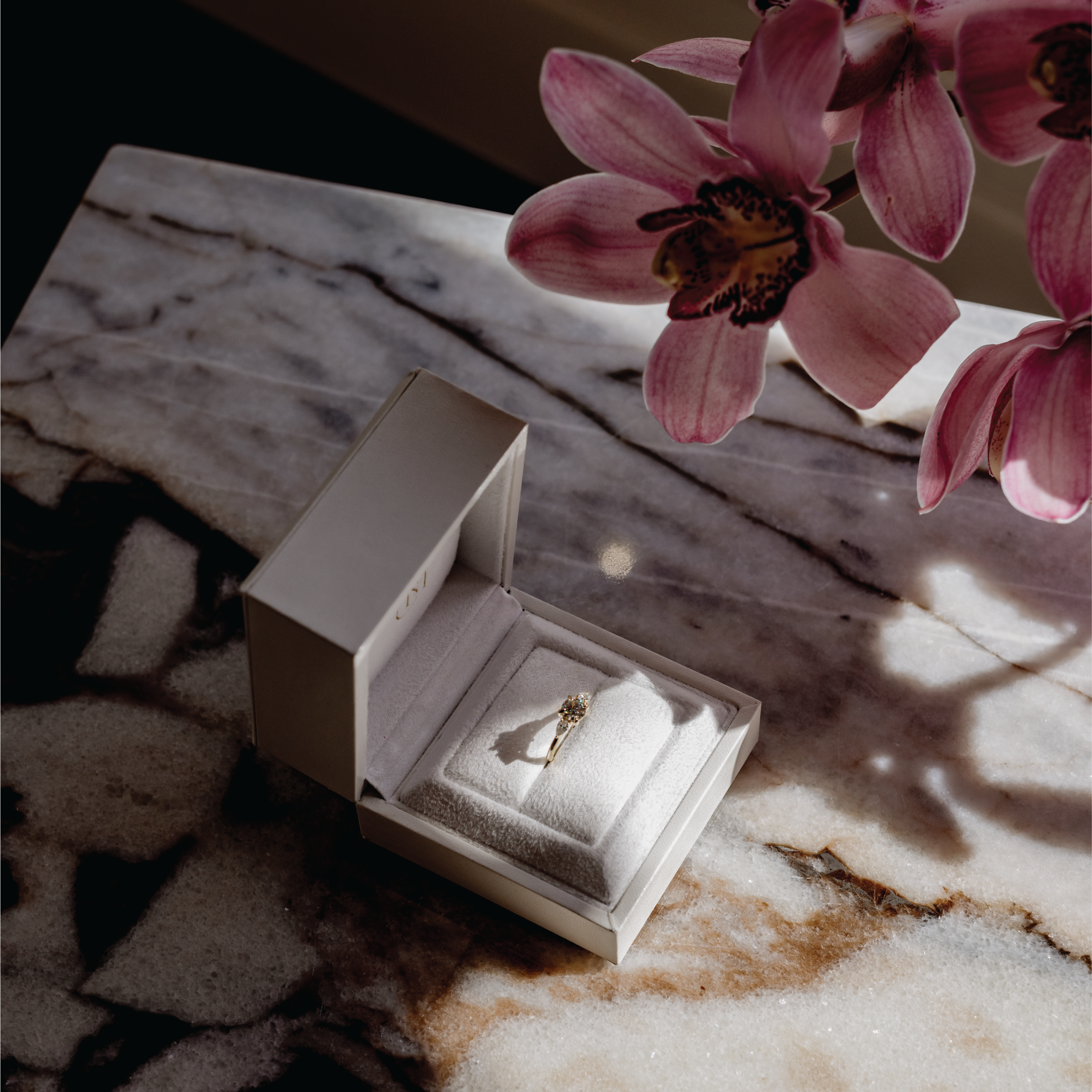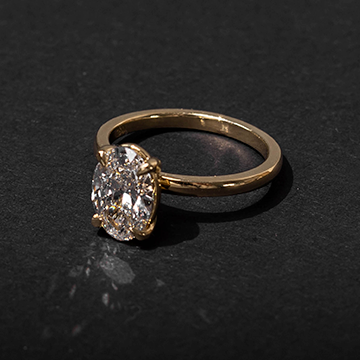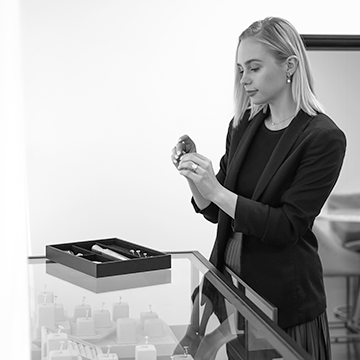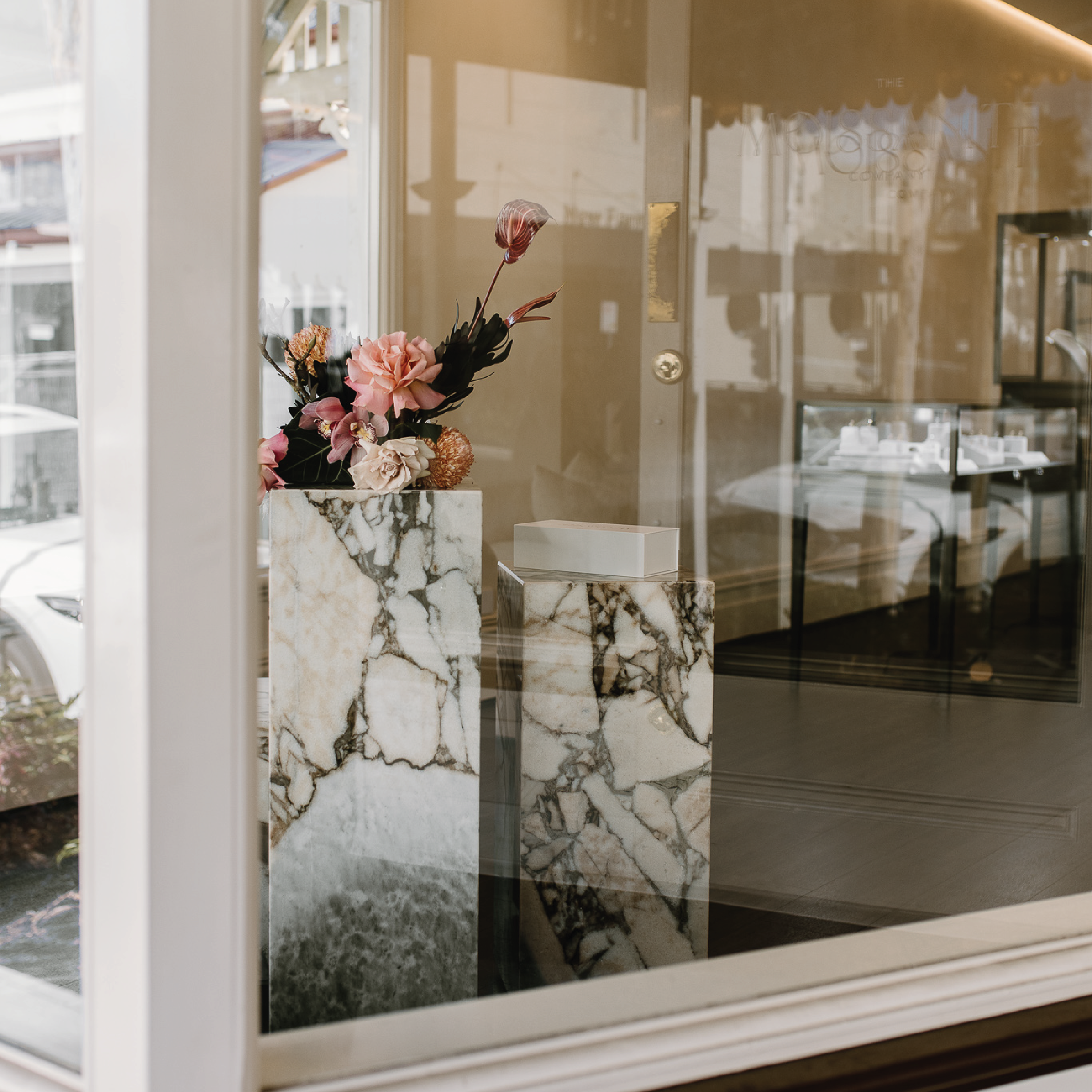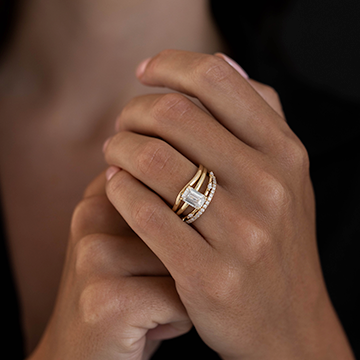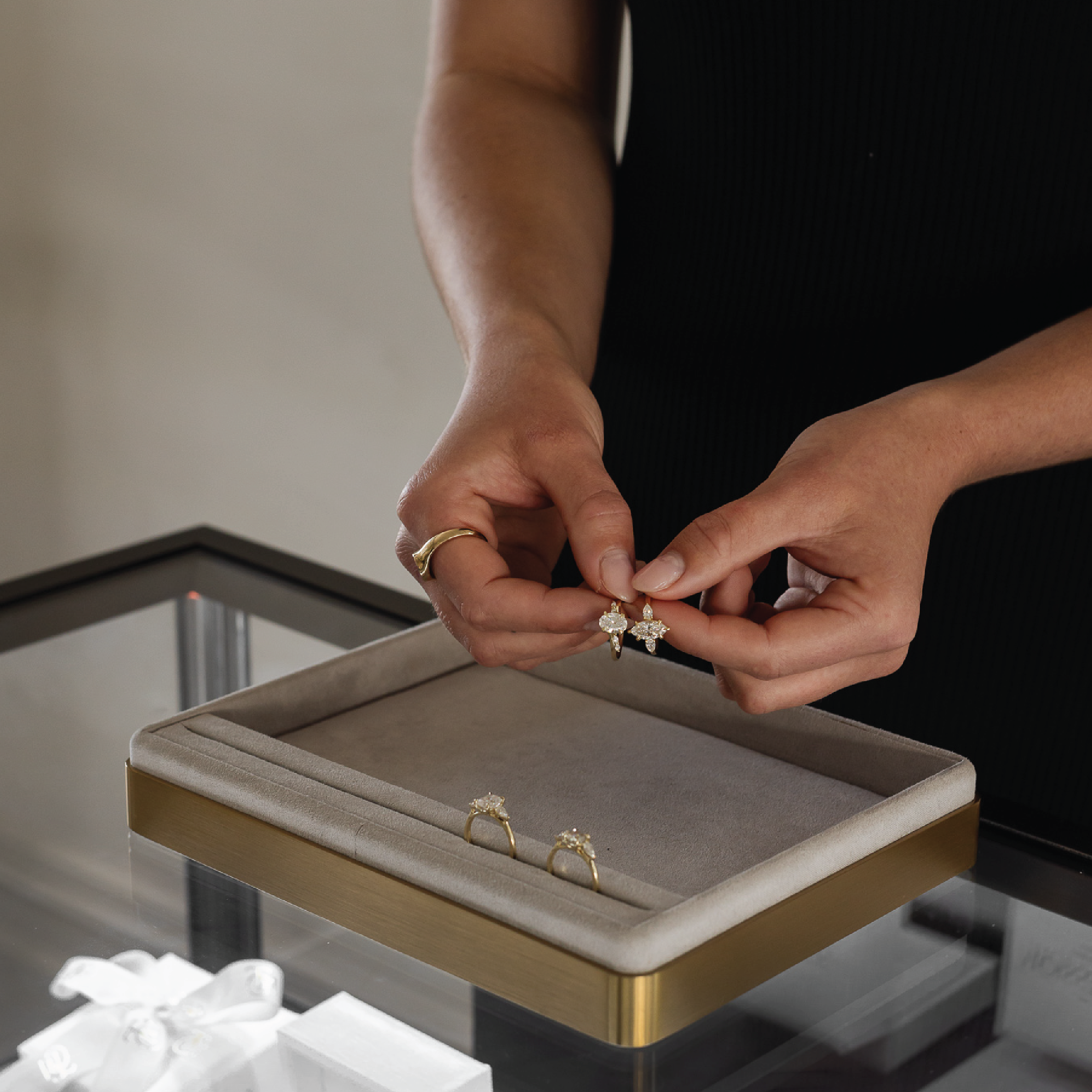How is Moissanite Made?
While you might have heard that ‘diamonds are made under pressure’, the process behind producing an ethical, lab created Moissanite is much lesser known.
Moissanite was first discovered in 1893 by scientist, Dr Henri Moissan. He was examining rock samples from a meteor crater and at first, he mistakenly identified the gemstones as diamonds. It wasn’t until 1904 that Dr Moissan realised the rock samples were not diamonds, they were in fact silicon carbide (SiC) which we now know as Moissanite.
Today, naturally occurring Moissanite is exceptionally rare, and therefore all Moissanite on the market is lab created in controlled conditions. Using heat and pressure, silicon and carbon are combined to produce Moissanite. The Moissanite is then carefully cut to the desired shape and faceting style for placement into a ring.

The Moissanite Company’s moissanites are all hand cut - this allows for each stone to be perfectly faceted and cut to exact proportions that ensure the optical properties are second to none.
Lab creating these beautiful stones has many benefits. Not only can the colour and clarity be controlled to produce only the highest quality stones, but it’s also the more ethical option. Conflict free and minimal impact on our beautiful earth.
Did you know, that for every ring sold at The Moissanite Company a tree is planted? We have a conscious commitment to giving back. You can read more about our commitment to sustainability here.

